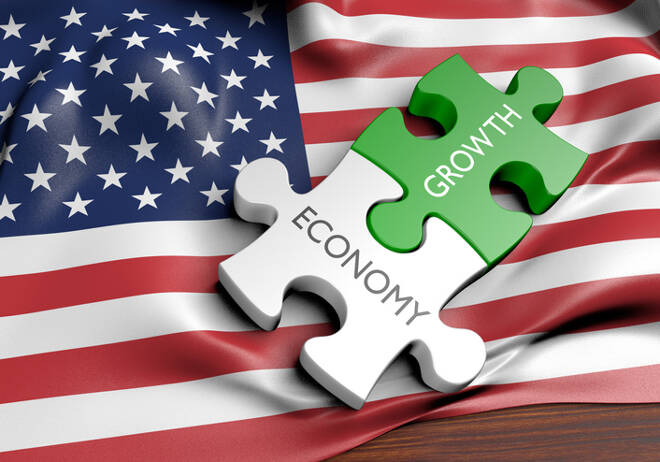Advertisement
Advertisement
GDP Slows, but Consumer Spending Dashes Fears of Recession
By:
While the Trump administration continues to blame seven rate hikes for the slowdown in the economy, and executives have grown worried about the back-and-forth tariff battle between the U.S. and China, weakening business sentiment, the government’s data has shown that consumer and government spending have helped propel GDP in the second quarter.
While most investors were watching Friday’s U.S. Gross Domestic Product report to see if it would have any impact on the Federal Open Market Committee’s interest rate decision on July 31, I was watching the reaction in the Treasury market and came to the conclusion that talk of a recession was dead at least this year and perhaps next year.
Remember a couple of months ago when Treasury yields inverted and talk of a recession accelerated? Brokerage firms put out a series of detailed reports with pictures and graphs showing how the inversion indicates a recession is coming. I remember writing at the time that the data was being misinterpreted because the inverted yield curve isn’t a reliable predictor of recessions and that sometimes recessions take place 18 to 24 months after the inversion.
In hindsight, all the inversion was actually telling us was that the Fed was going to be lowering rates in the future. Additionally, going forward, remember that a recession is usually defined as two consecutive quarters of negative GDP growth. It’s not defined by an inverted yield curve.
Many things can happen in those 18 to 24 months after the inversion to stop a recession from occurring. First and most importantly, the economy has to stop growing, and based on Friday’s data, it’s still growing, but slower than forecast.
Secondly, the Fed is going to make a preemptive strike to keep the ten-year expansion going when it lowers rates later this week even though the economy is still strong by most measures.
Thirdly, U.S.-China trade talks resume on Monday. Although most investors aren’t betting on a quick deal between the two economic powerhouses, Trump could decide that the trade dispute is putting his reelection at risk and cut a deal just to bring an end to the crisis.
So while we may still get a recession in 18 – 24 months, it will come after the President has been sworn in for his second term.
Consumers Are the Key
While the Trump administration continues to blame seven rate hikes for the slowdown in the economy, and executives have grown worried about the back-and-forth tariff battle between the U.S. and China, weakening business sentiment, the government’s data has shown that consumer and government spending have helped propel GDP in the second quarter.
Gross private domestic investment tumbled 5.5%, the worst since Q4 in 2015 as spending on structures slumped 10.6%. The decline pulled a full percentage point from the final GDP number.
Meanwhile, personal consumption expenditures rose 4.3%, the best performance since the fourth quarter of 2017. Government consumption expenditures and gross investment rose 5%, the fastest pace since Q2 of 2009 as the economy was coming out of the Great Recession.
In order to sustain economic growth, the consumer is going to have to keep spending until businesses gain enough confidence in the economy to begin investing again. The Fed may think that big personal consumption may not be sustainable so it is going to be cutting rates.
The consumer is going to keep spending if they are employed. So let’s hope there are no massive layoffs. Hopefully, businesses will run with the interest rate cuts and keep people on the payrolls until a trade deal is reached.
About the Author
James Hyerczykauthor
James Hyerczyk is a U.S. based seasoned technical analyst and educator with over 40 years of experience in market analysis and trading, specializing in chart patterns and price movement. He is the author of two books on technical analysis and has a background in both futures and stock markets.
Did you find this article useful?
Latest news and analysis
Advertisement
